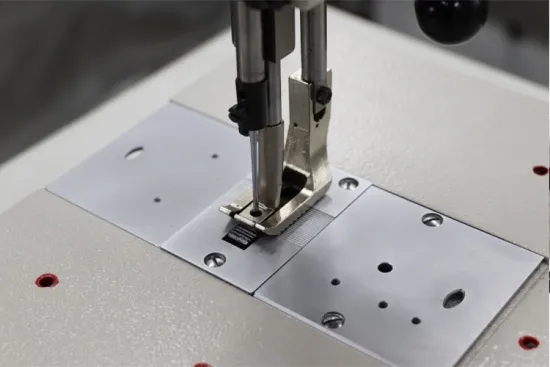Exploring the Benefits of Automated Sewing Machines for Efficient Textile Production
The Evolution and Impact of Automatic Machine Sewing
In the fast-paced world of textile manufacturing, automatic machine sewing has revolutionized the way garments are produced. This technological advancement has not only enhanced efficiency but has also opened new avenues for creativity in fashion design. Automatic sewing machines are designed to perform repetitive tasks with precision and speed, significantly minimizing the time and labor required in traditional sewing methods.
Historical Background
The journey of automatic sewing machines dates back to the mid-19th century when the first sewing machines were invented. Early machines, such as Isaac Merritt Singer’s model, laid the groundwork for future innovations. However, it wasn't until the advent of electronics and computer technology in the late 20th century that automatic sewing machines truly emerged. The introduction of programmable sewing machines allowed manufacturers to automate intricate sewing patterns, enabling mass production of garments.
How Automatic Sewing Machines Work
Automatic sewing machines employ various technologies, including computerized controls and robotic arms, to enhance sewing processes. These machines can read digital patterns and execute them with remarkable accuracy. They can automatically thread needles, adjust tension, and even cut fabric, which dramatically reduces the skill level required for basic tasks. Some modern machines have multi-needle capabilities and can handle multiple seams simultaneously, resulting in a drastic reduction of production times.
Benefits of Automatic Sewing Machines
1. Increased Efficiency One of the primary advantages of automatic sewing machines is their speed. These machines can operate continuously without fatigue, significantly increasing output compared to manual sewing methods. This high efficiency is particularly beneficial in the fast fashion industry, where quick turnaround times are crucial.
2. Enhanced Precision Automatic sewing machines are designed to perform with high levels of precision. This consistency reduces human error, ensuring that each garment meets predefined quality standards. High-quality stitching is critical in the textile industry, where even minor flaws can affect the final product's marketability.
automatic machine sewing

3. Cost Reduction While the initial investment in automatic machines can be substantial, the long-term savings are significant. Companies can reduce labor costs and increase production capacity with fewer workers. Over time, these savings contribute to a healthier bottom line, allowing businesses to invest in new technologies or research and development.
4. Versatility Modern automatic sewing machines can handle a wide variety of fabrics and sewing techniques, adapting to the needs of different markets. Whether it's denim jeans, silk blouses, or athletic wear, the machines can be programmed to accommodate diverse materials and patterns.
Challenges and the Future
Despite the advantages, the shift to automatic sewing machines does come with challenges. The transition requires significant investment, and smaller businesses may struggle to adapt to the technological demands. Additionally, there is a concern about the loss of jobs traditionally held by skilled manual seamstresses.
However, the future of automatic machine sewing looks promising. With advancements in artificial intelligence and machine learning, we can expect even greater efficiencies and capabilities in sewing technology. As these machines become increasingly sophisticated, they will likely incorporate more intelligent features, such as predictive maintenance, which can foresee issues before they disrupt production.
In the realm of fashion design, automated sewing is also paving the way for more innovative products. Designers can experiment with complex patterns and techniques that were once labor-intensive, pushing the boundaries of creativity. The marriage of technology and fashion is likely to continue to evolve, leading to unique, one-of-a-kind garments produced at unprecedented speeds.
Conclusion
Automatic machine sewing is reshaping the textile and fashion industries, offering significant benefits in efficiency, precision, and cost. While it presents challenges, particularly in terms of workforce dynamics, it also sparks innovation and creativity in design. As technology continues to advance, the potential for automatic sewing machines to further enhance textile production is immense, heralding a new era in the fashion world, where creativity meets efficiency.
-
Industrial Cylinder Arm Sewing Machine: Revolutionizing Heavy-Duty SewingNewsJul.28,2025
-
Cylinder Arm Sewing Machine: Perfect for Special Sewing ApplicationsNewsJul.28,2025
-
Cylinder Bed Sewing Machine: Essential for Sewing Complex MaterialsNewsJul.28,2025
-
Heavy Duty Sewing Machine: The Essential Tool for Industrial ApplicationsNewsJul.28,2025
-
Computerized Pattern Sewing Machine: Revolutionizing Precision StitchingNewsJul.28,2025
-
Heavy Duty Industrial Sewing Machine: Power Meets PrecisionNewsJul.28,2025
-
Leather Sewing Machine: The Industrial Standard for Tough MaterialsNewsJul.18,2025





























